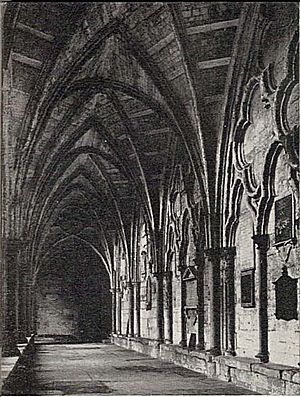Susannah Gunning facts for kids
Quick facts for kids
Susannah Gunning
|
|
|---|---|
| Born |
Susannah Minifie
|
| Died | 28 August 1800 Down Street, London, United Kingdom
|
| Nationality | British |
| Known for | Writer Novellist |
| Spouse(s) | John Gunning (married 1768-1791) |
| Children | Elizabeth Gunning |
| Relatives | Margaret Minifie (sister) |
Susannah Gunning (born around 1740 – died August 28, 1800) was a British writer. She wrote many novels. Her family was involved in a public disagreement in 1791. This disagreement was about who her daughter, Elizabeth Gunning, would marry.
Contents
Susannah Gunning's Life
Susannah Gunning was one of at least two daughters of Reverend Dr. James Minifie. Her sister was Margaret Minifie. We do not know much about Susannah's early life. She lived in Fairwater, Somerset, before her first novel came out in 1763.
On August 8, 1768, she married Captain John Gunning. He was a soldier in the 65th Regiment of Foot. He was known for his brave actions at the Battle of Bunker Hill. John Gunning was also related to the Duke of Argyll. Susannah and John Gunning had a daughter named Elizabeth Gunning, who was born in 1767. Elizabeth also became a novelist.
Family Disagreement
Susannah wanted her daughter Elizabeth to marry someone important. But this plan led to a big family argument in 1791. People at the time called it the "Gunninghiad." Susannah and her husband, John, each wanted Elizabeth to marry a different person. Elizabeth chose the person her mother liked. Because of this, Elizabeth and Susannah had to leave their family home.
The Duchess of Bedford helped them. Susannah Gunning wrote a letter to the Duke of Argyll. In the letter, she said she was innocent of any wrongdoing. But no one in their powerful family helped them. So, Elizabeth and Susannah went to France. They stayed there until the gossip about their family died down.
After the family separated, John Gunning, who was now a General, moved to Naples. He changed his will just before he died in 1797. He left money and his estate in Ireland to Susannah and their daughter.
Susannah Gunning died in London on August 28, 1800. She was buried at Westminster Abbey. Her grave does not have a headstone with her name on it. We do not know why she was buried there. A friend wrote that Susannah's life was "a life of holiness." An article in The Gentleman's Magazine said her books were "among the middling class of novels."
Susannah Gunning's Writing Career
Susannah Gunning wrote 13 novels and a long poem. She also wrote a letter to defend her daughter. She started her writing career with her sister, Margaret Minifie. They published their first book, Histories of Lady Frances S--- and Lady Caroline S---, in 1763.
From 1764 to 1770, Susannah published more novels. These included Family Pictures (1764), The Picture (1766), Barford Abbey (1768), The Cottage (1769), and The Hermit (1770). These novels were about young women marrying into noble families. This was a popular topic at the time. Susannah stopped writing when she married John Gunning in 1768.
She likely did not write any novels during her marriage. One book, The Count de Poland (1780), was published during this time. But it was probably written by her sister, Margaret Minifie. During the "Gunninghiad" family argument, Susannah wrote a letter to the Duke of Argyll. In the letter, she made her daughter seem like a victim. The letter was written in a very dramatic way, like her novels.
Susannah published her next novel in 1783. This was 15 years after she got married. After this, her writing often included humor and details from her own life. For example, in Coombe Wood (1783), the main character does not marry her cousin. This was similar to what happened during the "Gunninghiad" family argument.
Her poem Virginius and Virginia (1792) also had details from her life. It was about a father and child who should not be kept apart. Her family problems also inspired her novels Anecdotes of the Delborough Family (1792) and Memoirs of Mary (1793).
In 1796, Gunning wrote two novels that were not about her own life. Delves (1796) was an adventure story about a young boy. The Foresters (1796) was a translation of a French book. Her last novels, Love at First Sight (1797) and Fashionable Involvements (1800), focused on characters and their social lives.
Susannah Gunning's novels were somewhat popular. She often used dramatic language in her stories about families. This might have been because of her own experiences as a mother who needed money for her children.
Susannah Gunning's Books
- Barford Abbey (a Novel), 1767
- The cottage: a novel , 1775
- Susannah Gunning, M. Minifie (Miss.) The Count of Poland, 1780
- Anecdotes of the Delborough Family: a Novel, 1792
- Memoirs of Mary: a Novel, 1794
- Lord Fitzhenry, 1794
- Fashionable Involvements: a Novel, 1800
- Love at First Sight: a Novel, 1797


